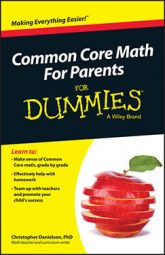In seventh grade math, Common Core students begin to learn about probability. Probability is the study of how likely something is to happen. Students develop theories about probability and then test these theories with experiments.
The common example is flipping a coin. If the coin isn't weighted, if you let it hit the ground, and if you don't otherwise interfere with the flip, then the probability of getting heads is
The probability of getting tails is also
so these two outcomes are equally likely.
But say that someone hands you a coin. You flip it three times and they're all heads. You flip it three more times and get heads again on all flips. At what point do you begin to suspect that there is something wrong with the coin? This is the kind of thinking seventh graders are doing in the Common Core.
Although they may not work with weighted (or otherwise unfair) coins, seventh graders do develop theories, make claims and then flip coins, spin spinners, draw blocks out of bags, and so on, in an effort to test these theories against reality. Just as with the coin example, an important question for seventh graders to consider is "How far off do your model and your results have to be before you start to rethink your model?"
Examples of the kinds of questions that can spark this model building include
If you flip two coins, what is the probability that they both come up the same?
If one in six bottles of pop is a winner in a contest, does that mean you are guaranteed to win if you buy a six‐pack?
What is the probability of rolling a sum of 3 when you roll two six‐sided dice?

